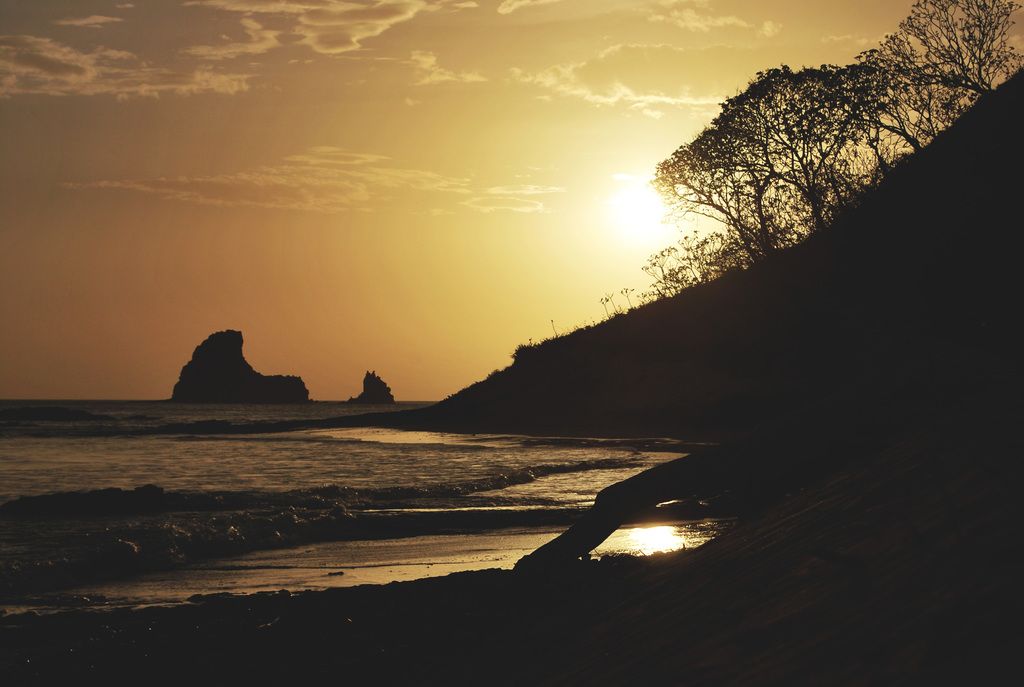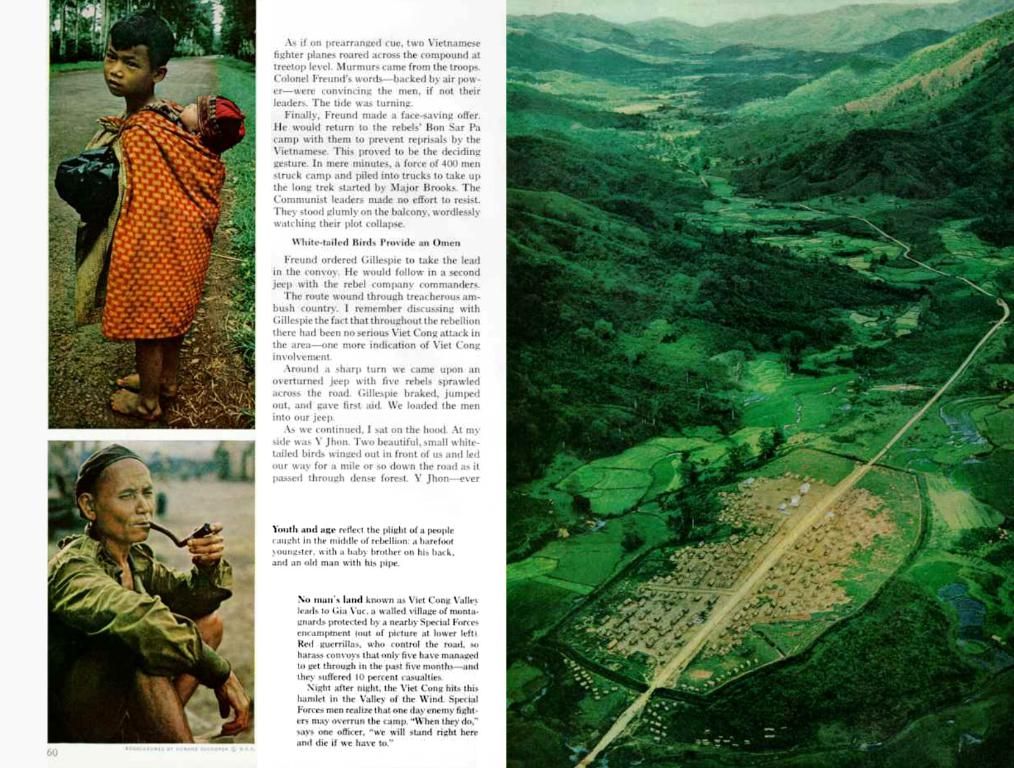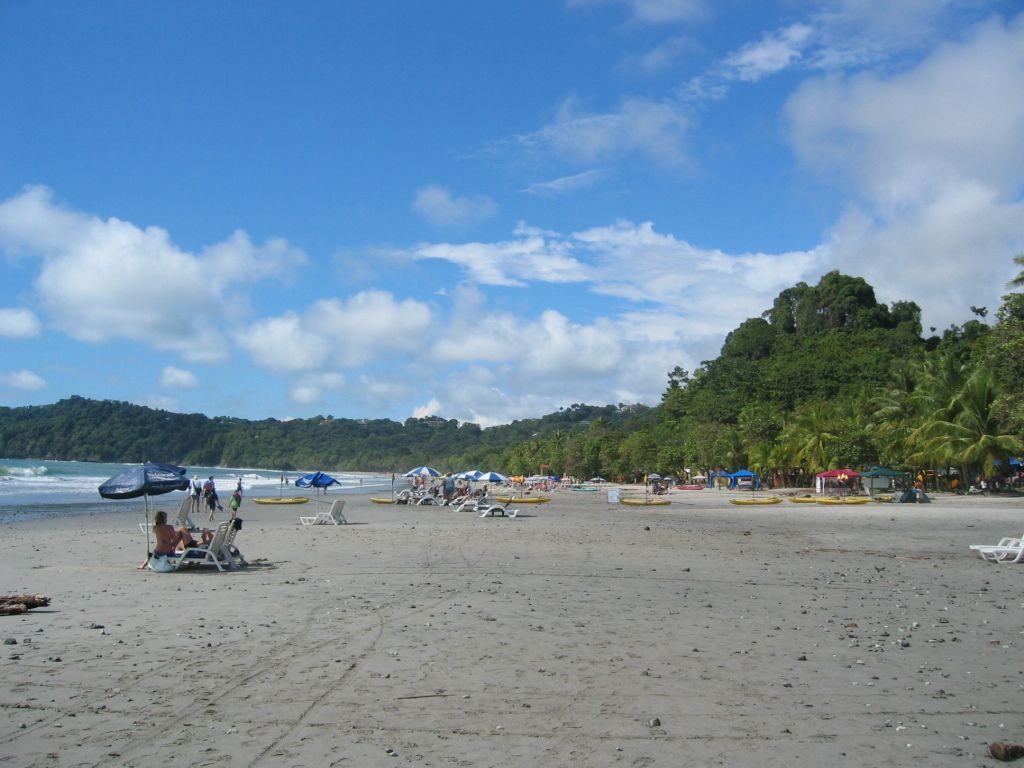Mastering Wildfire Craftsmanship: A Guide to Igniting a Blaze in Nature's Heartland
Surviving on a Desert Island: Mastering the Art of Creating a Campfire
In the event of finding oneself stranded on a desert island, the ability to ignite a campfire is an invaluable skill. This ancient technique transcends beyond simple sparks and fuel; it is about understanding one's surroundings, wise material selection, proper preparation, and nurturing the flame. Here's a comprehensive guide to help individuals master the art of creating a fire in the wild.
The Physics of Fire and Fire Starting
The fundamental necessity for fire is the fire triangle, consisting of heat, fuel, and oxygen. For a fire to take hold, each component must be present. For instance, if the wood is wet, all heat is absorbed by the water, preventing the fuel from reaching a high enough temperature.
Every element has its burning point, the temperature at which it combusts. Soft woods ignite at lower temperatures than hard woods, while different types of wood burn at varying temperatures. Some woods spit, some provide better smoke, and some make excellent embers for cooking.
Wild Fire Fuelling: Best Types of Wood
In order to build a fire, three types of materials are required: tinder, kindling, and firewood. Each performs a unique role in the fire-making process.
Tinder: A light, dry material that catches fire easily, tinder is vital for generating enough heat to ignite kindling. In the wilderness, dry grass, fluffy seed pods, and dry leaves may serve as tinder. On a desert island, the inner husk of mature coconuts is an excellent source of tinder as it remains consistently dry.
Before sparking the tinder, buff the material by rubbing it together to ensure it has numerous frayed ends, making it easier to catch a spark. Keep an eye out for new tinder supplies to enhance future fire-starting efforts.
Kindling: Small sticks, twigs, and pieces of bark constitute kindling. As the tinder burns and begins to fade, the kindling catches fire, providing a more substantial, sustained flame. Kindling bridges the gap between quickly burning tinder and the long-lasting firewood.
Firewood: Large logs comprise firewood, which provide substantial heat and a sustained burn. Collect firewood from downed trees or dead branches, ensuring it's dry wood, not green or rotten. Even during a rainstorm, dry wood can typically be found in the core of vertical, standing dead wood.
For a complete guide on building a shelter, please see our article on "How to Build a Shelter."
The Structure of Your Fire
Multiple methods exist for constructing a fire, such as the log cabin and teepee structure. For beginners, the teepee campfire method is simple and effective.
Begin by arranging your tinder in the center of the fire bed. The tinder bundle should be loosely packed to allow air to flow. Create a teepee structure by arranging small sticks, dry bark, and twigs around the tinder, leaving a gap to add your burning tinder to ignite the fire.
Preparing Your Fire Site
Following the collection of materials, properly preparing your fire site is essential. Choose a spot away from low-hanging branches, ensuring a safe distance from flammable materials. Seek a flat, clear ground devoid of grass and dry leaves. The fire ring or fire pit should be surrounded by bare earth or stones.
To create the groundwork, start by clearing a space of about 2 feet in diameter. Then, construct a fire bed using a layer of dry, non-combustible material such as sand or small stones. On this bed, you'll build your fire lay.
For areas with high fire risk, have a bucket of sand on hand.
Starting the Fire in the Wild
Numerous methods exist for igniting fire in the wild, including flint and steel, friction fires, natural flammable oils, solar ignition, and batteries and steel wool.
One of the oldest techniques for creating fire is flint and steel, which relies on striking two pieces of material together to generate sparks. The sparks are then caught on a piece of char cloth, a carbonized piece of fabric, and transferred to a tinder nest to create an ember.
In modern times, survival kits often include a Ferro rod, a synthetic material that generates sparks at 5,500 degrees Fahrenheit (3,000 degrees Celsius). This shower of sparks will even work when damp.
Creating a friction fire is truly returning to basics. This method involves rubbing two pieces of wood together to generate enough heat to create an ember. One popular friction method is the bow drill fire, which requires five components: a bow, a drill or spindle, a fireboard or base, and a bearing block or handhold.
In the wilderness, fungus, birch bark, and pine needles make excellent natural fire starters due to their flammable oils, especially in damp or wet conditions. These can be particularly useful when locating dry tinder proves challenging. Fat wood, found in coniferous trees, is another excellent option as it burns like lantern oil.
Solar ignition can be achieved by using a magnifying glass, eyeglasses, or any clear, curved lens to focus sunlight on a piece of tinder, creating a concentrated beam of heat that can ignite the material. We have even managed to initiate this with plastic bottles, clear plastic bags, and a lightbulb found on the beach.
In some instances, we may find ourselves stranded in the wilderness with only batteries and steel wool. These seemingly unpromising conditions can yield a fire, as stretching out and connecting the steel fibers of the wool to the positive and negative terminals of a battery will cause the wool to begin to glow and smolder.
Nurturing the Fuel and Flame
Building a fire is only the beginning. To keep it burning, feed it dry fuel wood. Start with smaller pieces of dry wood, such as small twigs, gradually adding larger pieces of wood to sustain the flame. Balance is essential - provide enough fuel while allowing for airflow between pieces of wood to maintain a steady, brightly burning fire.
Remember, the goal is a long, steady burn, not a short, intense inferno.
Managing the Fire: The Responsible Wilderness Guardian
Fire can be both life-enhancing and a threat to wild animals in the wild. Maintaining control and respecting the surrounding area is crucial.
Never leave a fire unattended. If stepping away is necessary, ensure it is extinguished safely. To do so, shovel dirt, sand, or water onto the hot embers until completely covered, denying it oxygen. When pouring water, do so gently to avoid scattering hot embers.
Continue to sprinkle water and poke holes into the soil or sand until the ground feels cool to the touch, and there are no longer hissing noises. Finally, kick dirt over the fire pit area to remove all trace of the fire ever being there.
Starting a Fire in the Rain
One of the most challenging survival scenarios is igniting a fire during rain. As everything is soaked, it may seem impossible to find dry tinder. However, water offers another critical aspect in this situation: standing deadwood.
Dead branches attached to trees are often drier than wood on the ground. Underneath the bark of these branches or by splitting them and using their core, one can typically find dry wood. Run a knife down the wood to create feather sticks - spindly thin wood that can take an ember.
If resin-rich wood, like pine, is unavailable, look for alternative sources like sticks covered in lichen or mushroom materials.
In Summary: 8 Tips for Making a Fire in the Wild with Nothing
- Familiarize yourself with various wood species and their respective uses.
- Prioritize dryness, as dead-standing wood is best.
- In a rainstorm, split open dead-standing wood and scrape its core into feather sticks.
- Prepare all tinder, kindling, and fuel before attempting to ignite.
- Recall the Fire Triangle (oxygen, heat, and fuel) as a reference when a fire is not taking.
- Collect tinder whenever the opportunity arises and store it in a dry place.
- Practice friction fires, as they are all about technique - if possible, practice on an already proven working kit to master the technique.
- Always maintain a safe distance from overhead branches and keep the fire manageable. When extinguishing a fire, pour water on it and poke holes in the ground to cool the earth as well.
Now that you understand how to make a fire, exploring food sources is the next step. Read our blog on "How to Fish Without Gear" or join one of our expeditions. If you're unsure of which destination to choose, our helpful quiz "Help Me Choose My Island" will guide you.
References:
[1] The Lost Explorer: Wilderness Survival Skills, https://www.thelostexplorer.co.uk/articles/wilderness-survival-skills/[2] Minnesota Public Radio: How to start a fire without matches, https://www.mprnews.org/story/2012/10/03/start-a-fire-without-matches[3] The Smithsonian Channel: How to Start a Fire in the Wild, https://www.smithsonianmag.com/smart-news/the-art-of-starting-a-fire-180961384/[4] National Geographic: 9 Rules for Building a Campfire, https://www.nationalgeographic.com/adventure/travel/article/how-to-build-perfect-campfire[5] The Prepper Journal: Survival Skills: Campfire Wood, https://www.theprepperjournal.com/2014/08/survival-skills-campfire-wood/
- Gathering both tinder (dry grass, fluffy seed pods, dry leaves, or the inner husk of mature coconuts in the wilderness) and appropriate fuel (soft woods for quick ignition, hard woods for sustained burning, and dry wood and feather sticks in the rain) is essential for creating a campfire.
- Proper preparation of the fire site includes selecting a spot away from flammable materials, clearing a space, and using a layer of dry, non-combustible material like sand or small stones as a fire bed.
- For beginners, the teepee campfire method is simple and effective; starting by arranging a loosely packed tinder bundle in the center of the fire bed, then creating a teepee structure with small sticks, dry bark, and twigs around the tinder, leaving a gap to add the burning tinder.
- Nurturing the fire requires feeding it dry fuel wood, starting with smaller pieces, gradually adding larger pieces to sustain the flame while providing enough fuel and maintaining airflow.
- Maintaining control and respecting the surrounding area is crucial - never leave a fire unattended, ensure it's extinguished safely, and cover the embers with dirt, sand, or water until completely covered, denying it oxygen. Then, pour gentle water, poke holes into the soil or sand, kick dirt over the fire pit area, and leave no trace of the fire ever being there.




